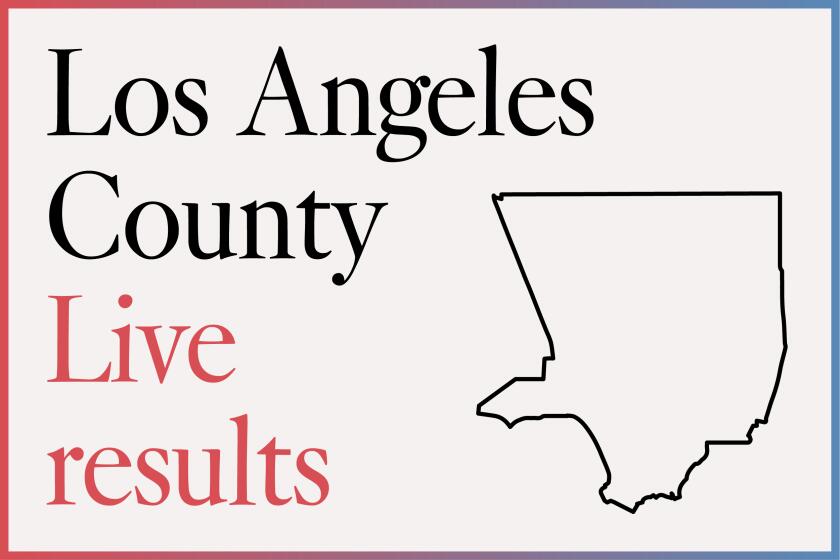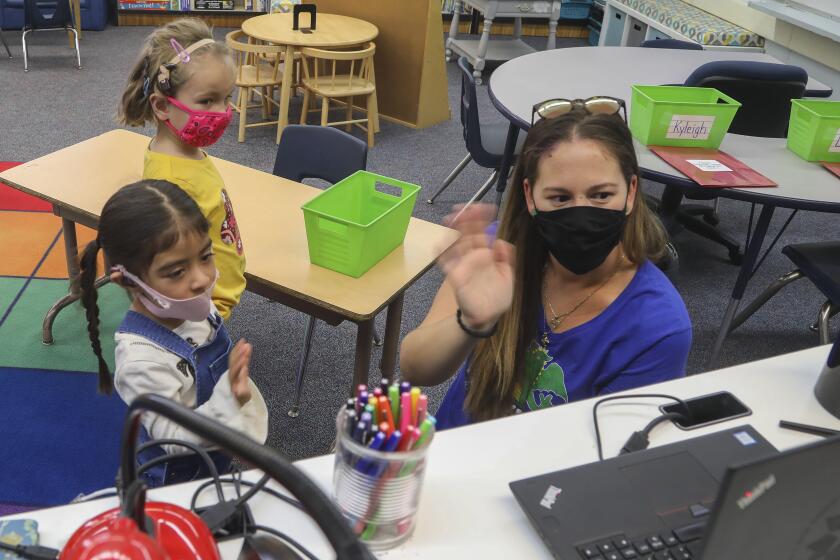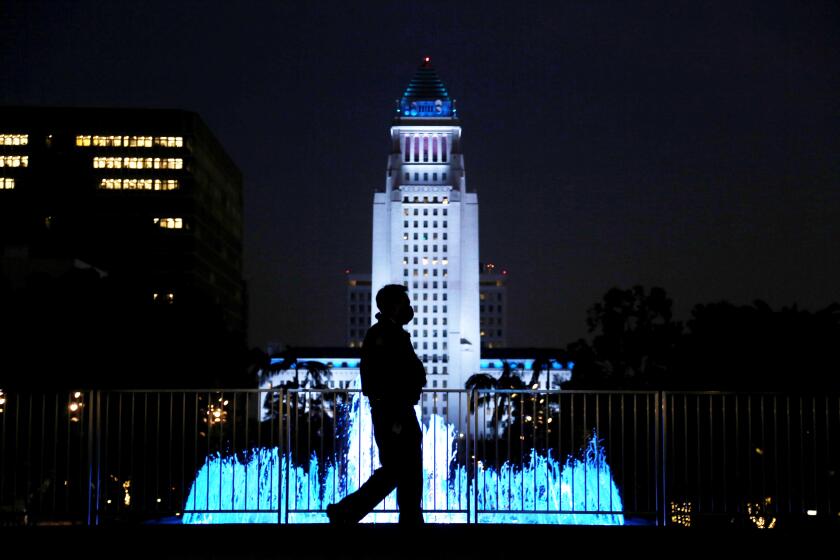L.A. school board races show split between union- and charter-backed candidates
- Share via
The Wednesday morning tally in two crucial Los Angeles Board of Education contests showed a charter-school backed candidate leading in one race and a teachers union-backed candidate leading in another.
Although more votes remain to be counted, the margins for the leaders appear large enough to hold and are based on what the county registrar’s office called “semi-official results.” If they do hold, school board members supported by charter advocates would hold a 4-3 board majority in the nation’s second-largest school system.
In the first posted returns for District 3, which covers most of the western San Fernando Valley, union-backed incumbent Scott Schmerelson had a lead over charter-backed Marilyn Koziatek by 54% to 46% of votes cast. In District 7, which stretches from South L.A. to the Harbor area, charter-backed Tanya Ortiz Franklin was in front of union-backed Patricia Castellanos by a tally of 58% to 42%.
The school board contests are probably the most expensive board elections ever, with combined reported spending nearing $17.5 million so far. Supporters of charters, backed by a relatively small number of wealthy donors, vastly outspent the other side.
At stake was whether a board majority would consist of trustees helped into office by one faction or the other, something that will matter as privately operated charters compete with district-operated schools for a declining number of public school students. Moreover, under recently passed state laws, local school boards have more authority to reject applications for new charters and to deny renewal of existing ones.
Close to 1 in 5 district students attends one of these independent charters, which are authorized and monitored — but not controlled or managed — by L.A. Unified. The school system has more than 200 charters, more than any other district in the nation. Most charters are nonunion.
The current, pre-election day board majority, by a 4-3 margin, leans toward the view of United Teachers Los Angeles, which wants stricter oversight on charters and to limit their growth. Both seats on the ballot were held by board members considered to be part of the narrow union-leaning majority — although no board members have voted lockstep with their supporters on every issue. That’s why a split election day decision of the two races creates a new political dynamic, with the 4-3 split favoring candidates brought to office with dominant financial support from charter advocates.
As with everything else in 2020, the COVID-19 pandemic affected both the campaign and campaign issues. L.A. Unified campuses shut down on March 13 and remained entirely closed for in-person instruction until Oct. 5, when teachers began limited one-on-one tutoring.
So far, about 1,000 of the district’s 460,000 K-12 students have been able to take advantage of this tutoring, according to district figures, leading to increasing frustration among students and parents who already are beset with the challenges of learning from home.
Several thousand more students could soon benefit from extra help — because the district and union agreed this week on procedures to allow up to three students per teacher at a time. Only students with special needs are eligible for these services. Campuses will not reopen for all students until January at the earliest.
County officials have made it easier for elementary schools to reopen for their youngest students under waivers, dropping a requirement to show union support.
One question hanging over the campaign is how the coronavirus would affect voters. The one incumbent, Schmerelson, defended the district’s response. The other three candidates were more critical, saying more students should have been helped sooner in receiving computers and internet access to do schoolwork entirely from home.
Campaign forums took place online, and the issues included the district’s response to the pandemic.
It was not a new development for charter supporters to outspend unions, but that differential reached new levels in this campaign, according to figures compiled by the City Ethics Commission, which collects campaign spending information.
An independent campaign in support of Koziatek spent more than five times as much as did one on behalf of Schmerelson. The spending differential in the other race favored Franklin by more than 3 to 1.
The teachers union has compensated for this difference in the past with a well-developed ground game — sending teachers and allies door to door in residential neighborhoods. This approach was abandoned because of the pandemic. Instead, the union has emphasized calling voters, which the pro-charter side has done as well.
Another election wildcard is a change in the timing of elections. In the past, school board elections were settled in low-turnout municipal elections. This election, however, marks a switch of the board races to the general election.
The campaign dynamic — charters versus unions — oversimplifies existential questions facing L.A. Unified. Long-standing problems include serious financial strains and ongoing contention over how best to serve low-income Black and Latino students who are lagging academically and will have additional academic ground to make up when campuses ultimately reopen.
The District 3 race pitted Schmerelson, 69, a longtime and well-liked principal, against Koziatek, 39, who manages community outreach for Granada Hills Charter High School. Her two children attend a traditional neighborhood public elementary school.
Schmerelson finished first in the March primary, with 42% of the vote, but was at risk because of the money being spent against him — and the possibility that dissatisfied voters would unite behind the one remaining challenger in the Tuesday runoff.
Franklin would replace longtime incumbent and current board President Richard Vladovic, who was barred from seeking reelection by term limits. On policy matters, Vladovic moved toward or away from charters or unions at various times. Recently, the unions have been more pleased with his positions.
The two candidates — Franklin and Castellanos — staked out similar policy positions, including in response to the pandemic. But they presented different strengths to voters. The union-backed Castellanos, 50, brought the experience of a current district parent and political savvy. Charter-backed Franklin, 36, counters with education experience as a former classroom teacher and as an administrator within a group of L.A. schools.
In the March primary, Castellanos received 27% of the vote and Franklin 24%. Three other candidates split the remainder of the vote.
More to Read
Sign up for Essential California
The most important California stories and recommendations in your inbox every morning.
You may occasionally receive promotional content from the Los Angeles Times.













